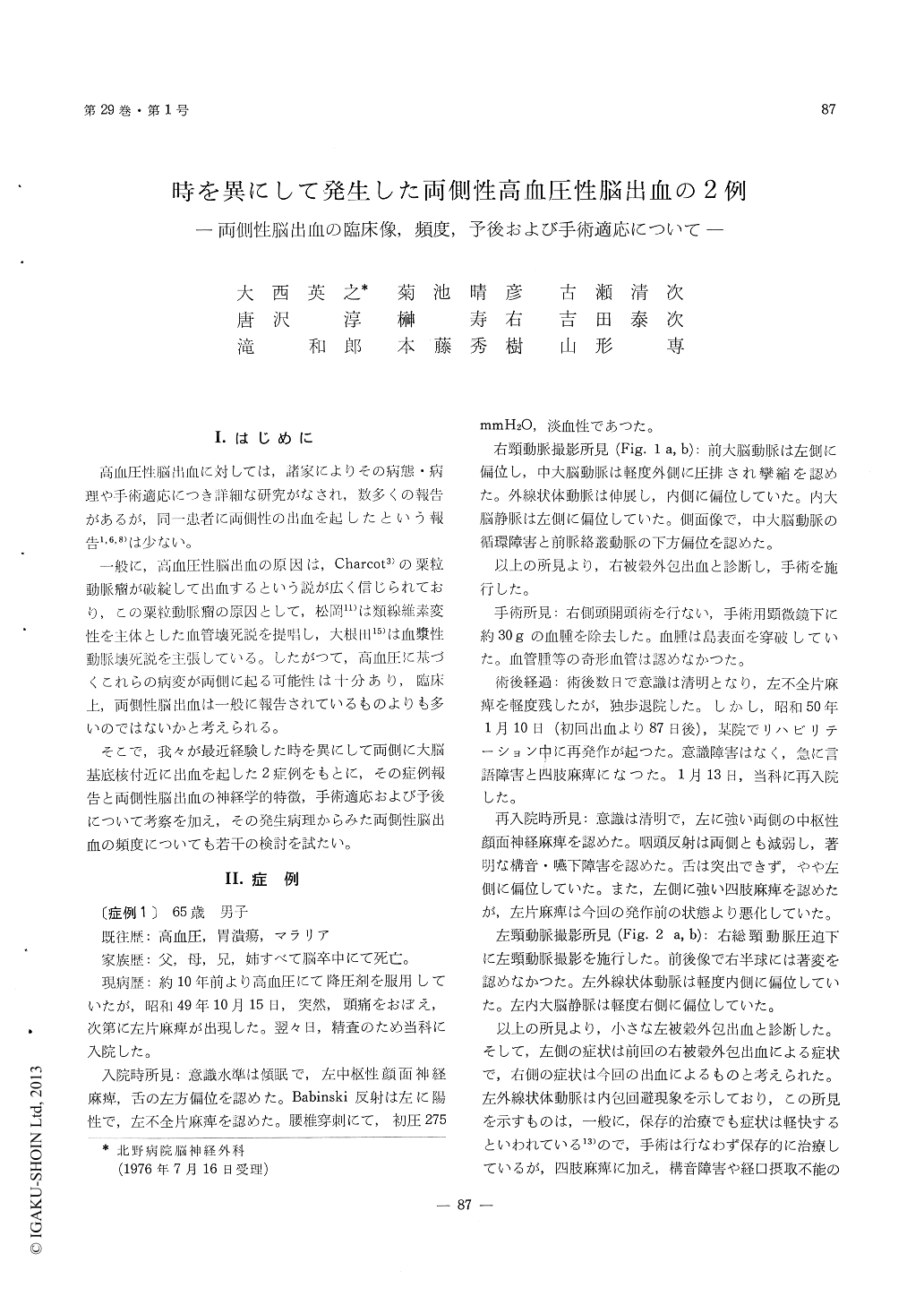Japanese
English
- 有料閲覧
- Abstract 文献概要
- 1ページ目 Look Inside
I.はじめに
高血圧性脳出血に対しては,諸家によりその病態・病理や手術適応につき詳細な研究がなされ,数多くの報告があるが,同一患者に両側性の出血を起したという報告1,6,8)は少ない。
一般に,高血圧性脳出血の原因は,Charcot3)の粟粒動脈瘤が破綻して出血するという説が広く信じられており,この粟粒動脈瘤の原因として,松岡11)は類線維素変性を主体とした血管壊死説を提唱し,大根田15)は血漿性動脈壊死説を主張している。したがつて,高血圧に基づくこれらの病変が両側に起る可能性は十分あり,臨床上,両側性脳出血は一般に報告されているものよりも多いのではないかと考えられる。
1) Two cases of bilateral hypertensive intra-cerebral hemorrhage were reported. In the first case, hemorrhage developed in the right thalamus and then in the left putamen with an interval of 2 years and 5 months. In the second, hemorrhage in the right putamen was followed by that in the left putamen 3 months later.
2) Vascular change due to hypertension develope in multiple sites, leading to unexpectedly frequentrecurrences. Accordingly, careful follow-up is re-quired after the first attack. Additional attention must be paid on possible re-hemorrhage in the contralateral regions.
3) Cerebral basal ganglia are most frequently affected by the first intracerebral hemorrhage, and further re-hemorrhages are also often observed in the contralateral basal ganglia, resulting in probable easy occurrence of bilateral hemorrhage.
4) Bilateral intracerebral hemorrhage is neuro-logically characterized by double hemiparesis in a form of advanced hemiparesis as compared with those due to the previous hemorrhage, by develop-ment of pseudobulbar palsy and by excessively severe symptoms for the size of hematoma.
5) Prognosis of re-hemorrhage is poor. Operation might not be indicated when it is nothing else than only a means to lifesaving and forces the patient to send a vegetative life. Thus, on con-sidering indications of operation, not only medical significance but also social significance must be taken into account.

Copyright © 1977, Igaku-Shoin Ltd. All rights reserved.


